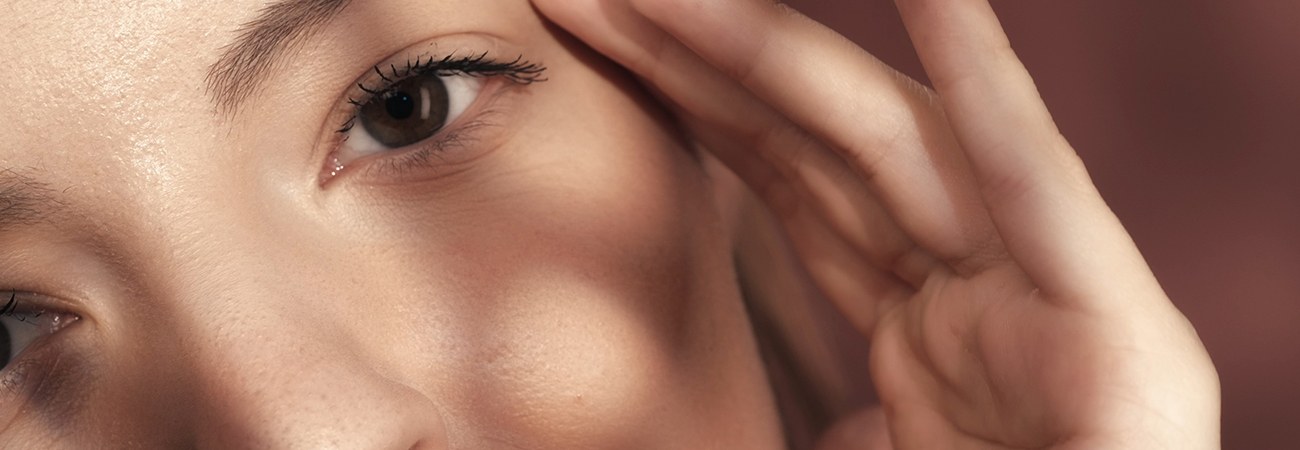Blepharoplasty is a minimally invasive plastic surgery also known as eyelid lift surgery. It is performed in order to eliminate aging signs from the upper and lower eyelids.
Upper eyelid surgery contours and lifts upper eyelids by removing excess saggy skin and lifting the muscle that moves the eyelids. It is also performed to reposition a prolapsed tear production gland and eliminate fat pads on the upper eyelids which create a heavy look of the eyes. This procedure leaves no visible scars because the incision is made in the eyelid skin folds. Upper Blepharoplasty can be performed to improve peripheral vision, because it lifts and tightens droopy upper eyelids.
Lower eyelid surgery removes puffiness, saggy bags underneath the eyes, and excess skin and fat. It is also performed to address the lower eyelid support. The incision is made under the lower eyelashes line through which Dr. Dragana Spica removes the excess skin and fat to make the eyes less tired-looking and aging.
Blepharoplasty is a sophisticated procedure, very effective in firming saggy eyelids and making the eyes appear refreshed and rejuvenated.
Blepharoplasty can be safely combined with other surgical procedures like brow lift, face lift or neck lift.

You are a good candidate for Blepharoplasty if you want to remove excess skin, fat or muscle from your eyelids for aesthetic goals or functional improvements of your eyesight.
Usual candidates are people in their 30s and 40s but patients who are older or younger than this age group can also undergo Blepharoplasty.
There are 3 different types of Blepharoplasty
Upper blepharoplasty – the incision is made in the natural crease of the upper eyelid, which makes the scar minimally visible.
Lower blepharoplasty – the incision can be made underneath the line of eyelashes or through the inner side of the lower eyelid (transconjunctival incision). Using the transconjunctival technique, the scar remains hidden on the inside of the eyelid, avoiding any visible scarring on the outside.
Combined blepharoplasty – This surgery is performed on both upper and lower eyelids at the same time. The surgery lasts longer and may require a longer recovery.
Upper and lower Blepharoplasy is a surgical procedure that significantly improves the appearance around the eye area.
Another medical benefit of this plastic surgery is improvement of peripheral eye sight once the excess skin, fat and muscle is removed from the upper eyelid.
Additionally, lower blepharoplasty can help reduce puffiness, dark circles, and bags under the eyes, resulting in a more youthful and refreshed appearance while also improving the overall function of the lower eyelid.
Even though Blepharoplasty is minimally invasive, it carries certain risks, including:
The most dangerous risk is the development of retrobulbar hematoma, which may lead to blindness if it is not treated within 2 hours. If the patients experience severe pain and sudden swelling of the eyelids, they need to inform the surgeon immediately.
It depends on the type of the surgery. If you are undergoing just upper or lower blepharoplasty, the procedure lasts between 45 minutes to 1 hour,
The combined blepharoplasty lasts for up to 2 hours.
Local anesthesia is most commonly used.
Other types include
Analgosedation which is a combination of mild sedation and local anesthesia.
General anesthesia which is used in specific cases and indications.
Even though Blepharoplasty is minimally invasive, it carries certain risks, including:
The most dangerous risk is the development of retrobulbar hematoma, which may lead to blindness if it is not treated within 2 hours. If the patients experience severe pain and sudden swelling of the eyelids, they need to inform the surgeon immediately.
The results may last for up to 10 years, or even longer depending on the genetic predisposition, lifestyle habits and aging.
The price of Blepharoplasty depends on the complexity, the length of the surgery and whether the surgery includes just the removal of the excess skin, fat and muscle or also the correction of the lateral angles of the eyes.
Before the surgery, you need to have a thorough consultation with your plastic surgeon and if necessary with the ophthalmologist.
Your plastic surgeon may require blood tests
Also, your surgeon will advise you to stop smoking and taking certain vitamins and supplements.
It’s important to arrange for someone to drive you home after the surgery.
On the day of your blepharoplasty you are prepped for the surgery and given anesthesia.
Dr. Dragana Spica makes the incision and removes the excess skin, fat and/or muscle.
In the end, Dr. Dragana inserts non-absorbable (interdermal) stitches which are removed after 7 days.
When you feel comfortable, you are discharged from the surgical sites and given all the instructions for the recovery period.
Blepharoplasty is considered as one of the least painful aesthetic surgeries.
The first 10 to 14 days are crucial for the recovery.
For the first 2 days you can use ice packs to reduce swelling and also sleep in a slightly elevated position for the same reason.
Dr. Dragana Spica will prescribe you certain antibiotic ointments and eyedrops which you need to use for about 7 days.
You can return to your normal daily activities after 2 weeks.
You should pay attention to the presence of bruising and swelling, which should subside after two weeks.
Also, you need to keep the surgical site clean to prevent infection.
It’s important to have regular follow-up appointments with Dr. Dragana Spica.
Leave us a message with your contact info and we will get back to you as soon as possible.